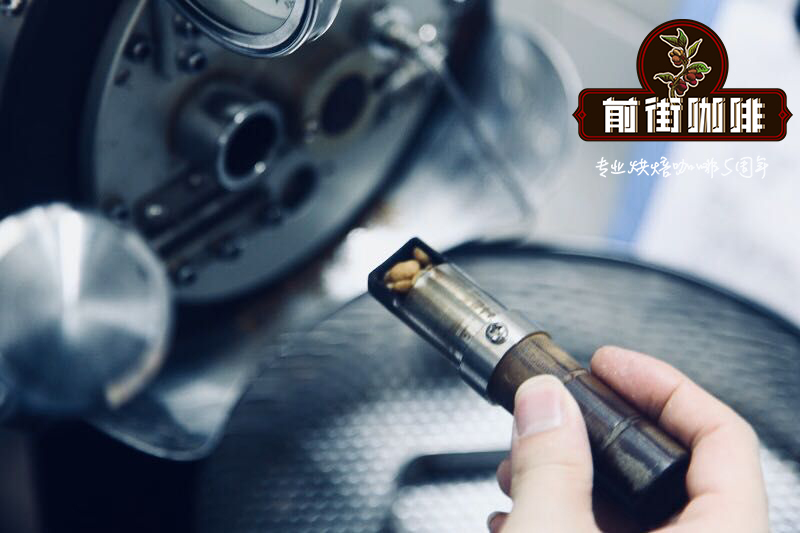What is the coffee bean crater? how is the crater on the coffee bean formed?

Professional coffee knowledge exchange more coffee bean information please follow the coffee workshop (Wechat official account cafe_style)
We sometimes see a black pit on the surface of ripe coffee beans. I believe this is quite annoying for many bakers. After all, there are many pits on good beans for no reason. In fact, this pit also has a name! People call it a "crater", so how did this crater come into being?
There will be a black crater on the surface of this kind of bean, which is what we usually call a "meteorite crater", which is often found in the beans after the second explosion. This is a baking defect, when baking, the pressure temperature in the pot is not much different from that of the beans, but at the moment of the pot, because the temperature and pressure drop sharply, so the pressure inside the beans begins to rush out of the surface of the beans.
Generally speaking, the online view is that the crater is caused by coffee beans being burned by hot rollers during baking, but I have a different point of view:
First of all, excellent roaster brands, the way of heat conduction is dominated by thermal convection (which can be simply understood as hot air), and most of the design of the drum is aimed at "throwing up coffee beans", so in the normal baking process, the possibility that the drum will have a burning effect on coffee beans is not high.
So how on earth did the crater form?
The answer is that the gas produced by the second burst broke through the most vulnerable position of the whole bean when it burst outward. The reason for this phenomenon is that when the baking process enters the second explosion, if the rhythm is not too slow, it may occur.
In order to avoid this situation, if the pace is too slow, it will easily lead to excessive carbonization.
Often baked beans friends must know this, crater refers to coffee beans in the baking process, local overheating, the formation of charcoal burning, because the shape is similar to the crater, hence the name. In his career as a bean baker, anyone who has not baked a crater is embarrassed to say that he is experienced (anyway, the editor has baked a lot of beans), then let's discuss the causes of the crater phenomenon today.
Improper firepower adjustment
Adjust the firepower sharply. The exothermic reaction of raw beans in the boiler is more intense than endothermic reaction, so the firepower adjustment of each stage should be carried out slowly, especially the low density raw beans are more sensitive to temperature.
If the interval between the first burst and the second burst is obviously lengthened, it is because the raw beans inside the boiler do not get enough heat source, in other words, the heat balance inside the boiler has been maladjusted. Therefore, it is necessary to confirm the time after the first burst and before the second burst, and increase the firepower with the amount of raw beans, especially when using direct-fire baking.
There is something wrong with the raw bean itself.
Poor drying conditions in the producing area are also one of the reasons. Raw beans dried by machines are more likely to have this condition than those dried by the sun. The more uneven the water content of raw beans is, the higher the probability of occurrence is. In other words, put into the same batch of raw beans in the baking machine, if some of the raw beans have less water content, it may cause a crater phenomenon. In addition, high-density raw beans are more likely to have this phenomenon than low-density raw beans.
Raw beans freeze (occur in winter)
When raw beans are stored in a place where the temperature is too low, it is easy to cause the moisture of raw beans to freeze. If you ignore this situation and bake as usual, the skin of raw beans is likely to burst in heat, especially on high-density raw beans. In order to prevent this from happening, please use the waste heat of the machine to thaw the frozen part of the raw bean, let the raw bean tissue return to the normal state, and then slowly increase the heat.
END
Important Notice :
前街咖啡 FrontStreet Coffee has moved to new addredd:
FrontStreet Coffee Address: 315,Donghua East Road,GuangZhou
Tel:020 38364473
- Prev

Is authentic American Coffee healthy? what are the advantages and disadvantages of drinking iced American coffee? is black coffee bad?
Professional coffee knowledge exchange more coffee bean information please follow the coffee workshop (Wechat official account cafe_style) American coffee, a coffee sold in all cafes, is also a coffee fans must order coffee, because American coffee is made quickly, good flavor, good taste, often in a hurry to go to work
- Next

Which bourbon varieties evolved from bourbon have special coffee flavor?
Professional coffee knowledge exchange more coffee bean information please follow the coffee workshop (Wechat official account cafe_style) Arabica species evolved from the variety ● [Bourbon] Bourbon from the Typica mutation, and Typica is currently the closest to the original species, bourbon spread from southwest Ethiopia to Yemen, Bourbon was brought from Yemen in 1715 and 1718
Related
- Beginners will see the "Coffee pull flower" guide!
- What is the difference between ice blog purified milk and ordinary milk coffee?
- Why is the Philippines the largest producer of crops in Liberia?
- For coffee extraction, should the fine powder be retained?
- How does extracted espresso fill pressed powder? How much strength does it take to press the powder?
- How to make jasmine cold extract coffee? Is the jasmine + latte good?
- Will this little toy really make the coffee taste better? How does Lily Drip affect coffee extraction?
- Will the action of slapping the filter cup also affect coffee extraction?
- What's the difference between powder-to-water ratio and powder-to-liquid ratio?
- What is the Ethiopian local species? What does it have to do with Heirloom native species?

